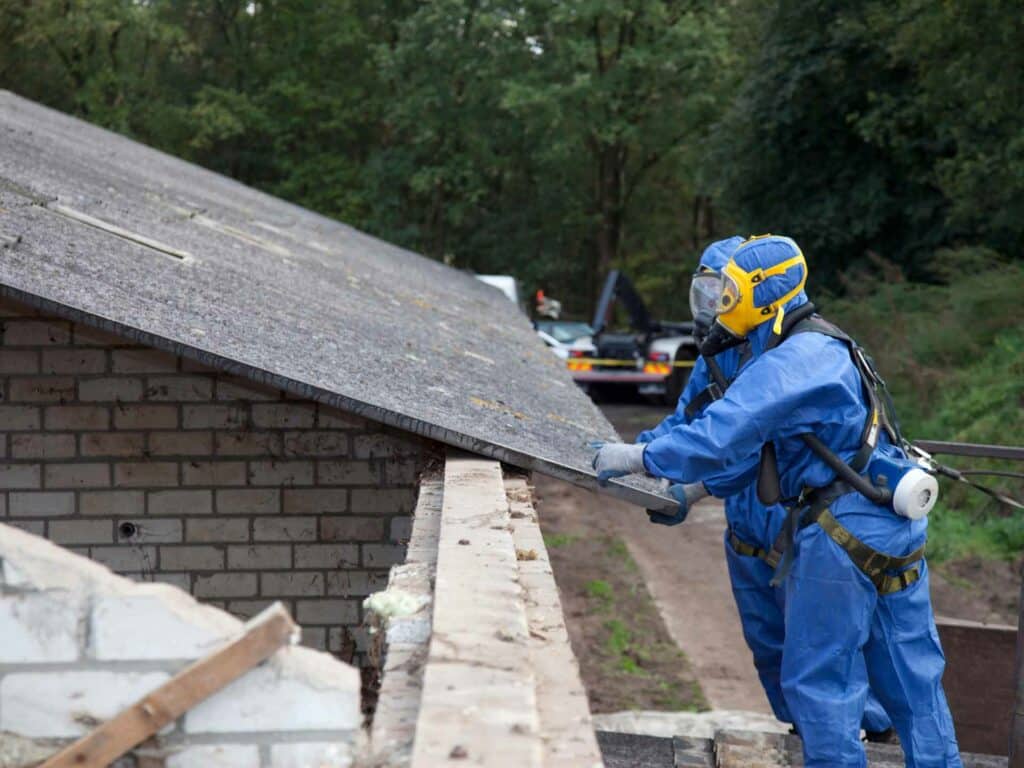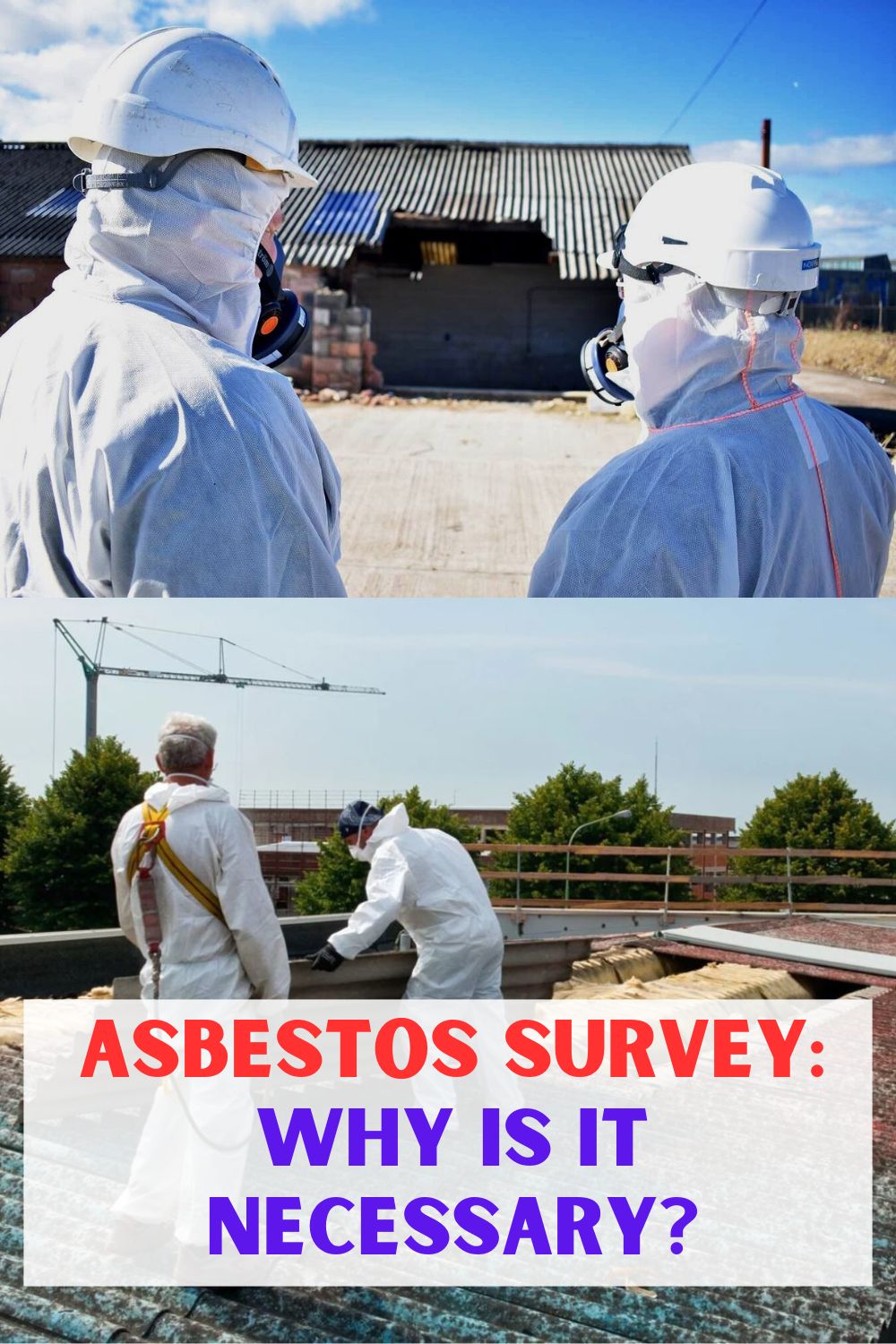Asbestos Survey – Asbestos is a naturally occurring mineral that was once commonly used in building materials due to its desirable properties, such as heat resistance, fire resistance, and durability. It was used extensively in construction and various industries from the late 19th century until the late 20th century. However, its use declined and has been heavily regulated or banned in many countries due to its well-documented health risks.
We all know that asbestos is a harmful material, although that wasn’t always the case, during the Industrial Revolution, asbestos factories were everywhere, as this naturally found material had amazing heat-resistant properties. It wasn’t until the 1980s that we fully understood the health implications of asbestos exposure.
Asbestos was widely used in construction and various industries for its fire-resistant and insulating properties. Many older buildings and structures may contain asbestos-containing materials (ACMs). An asbestos survey helps identify the presence, location, type, and condition of ACMs within a property.
Australian homes built pre-1990
It is estimated that around 30% of Australian homes actually contain asbestos and there is a vast asbestos survey and removal industry that is tasked with identifying and safely removing asbestos. That is a lot of properties and if your home was constructed pre-1990, you should call in the experts to carry out asbestos air monitoring with the aim of identifying the presence of this harmful substance.
What is asbestos air monitoring?
Asbestos air monitoring involves taking air samples to determine the presence of airborne particles of the material and if present, to estimate the level of presence. The only people who can carry out asbestos air monitoring are independent licensed asbestos assessors (ILAA), as they have the knowledge to accurately measure the levels of asbestos, if any.
When is an asbestos survey needed?
Asbestos can be found in many building materials, such as roof and ceiling tiles, partition sheeting, and other building materials and prior to asbestos removal, air monitoring must begin in the background and must be continued until the removal process is completed. A specific area around the affected area would be tested for airborne asbestos and when the removal is complete, a final airborne test is carried out and if the material is not detected, the building is certified to be asbestos-free and the building can be occupied.
Setting up a containment enclosure
Prior to the removal of asbestos, a compliant enclosure must be erected, which prevents airborne particles of the harmful material from spreading to other areas. Personnel wear protective suits with breathing apparatus and the area is strictly monitored to ensure there is no further contamination.
Main types of asbestos survey
There are 3main types of asbestos surveys, which are as follows:
- Asbestos management survey – Non-destructive and non-intrusive, This survey is a legislative requirement for non-domestic buildings built before 31/12/2003.
- Asbestos reinspection survey – Once asbestos has been detected, an asbestos reinspection survey might be carried out after a period of time to assess if the material is spreading.
- Asbestos refurbishment and demolition survey – This survey is carried out prior to refurbishment or the demolition of a structure.
Asbestos removal
The structure must be zoned off so as to prohibit entry by unauthorized personnel and technicians wearing breathing apparatus move in to remove the asbestos, while air monitoring is happening in the background. Once removal is complete and air monitoring shows there are no airborne particles in the atmosphere.
Asbestos clearance
This is the final step in the asbestos removal process and confirms that all traces of asbestos have been successfully removed. Once you receive this certification, the building can be occupied. Failure to obtain the clearance certificate means the building should remain out of bounds and the asbestos removal equipment should remain. This is legislative; therefore, guidelines must be followed and the certificate must be issued before the licensed asbestos assessor leaves the site. Here are a few design tips when renovating your kitchen.
Building materials that could contain asbestos
Here are some common building materials that may contain asbestos:
- Asbestos Cement Products: These include asbestos-cement sheets, shingles, siding, and pipes. Asbestos was added to cement to improve its strength and fire resistance. Roofing materials and water distribution pipes made from asbestos cement were once prevalent.
- Asbestos Insulation: Asbestos was used in various forms of insulation, including loose-fill insulation, pipe insulation, and insulation boards. Asbestos insulation was prized for its fireproofing properties.
- Floor Tiles and Adhesives: Vinyl and linoleum floor tiles manufactured before the 1980s often contained asbestos. Additionally, the adhesive used to attach these tiles to the floor may contain asbestos.
- Textured Ceiling Materials: Popcorn or textured ceiling materials, commonly used in residential construction, may contain asbestos. These materials were popular from the 1950s through the 1980s.
- Plaster and Drywall Compounds: Some older plaster and joint compound mixtures used in walls and ceilings contained asbestos. This was particularly common in mid-20th-century construction.
- Pipe and Boiler Insulation: Asbestos was used to insulate pipes, boilers, and other high-temperature equipment. It was prized for its heat resistance and insulating properties.
- HVAC Duct Insulation: In older heating, ventilation, and air conditioning (HVAC) systems, asbestos-containing insulation may be present on ducts and pipes.
- Fireproofing Materials: Asbestos was used in various fireproofing applications, including spray-on fireproofing for structural steel in commercial buildings.
- Gaskets and Seals: Asbestos gaskets and seals were commonly used in mechanical systems, such as engines and boilers.
It is only properties that were constructed before 01/1/2004 that might contain asbestos, which is approximately one-third of all Australian homes and commercial premises.
It is estimated that asbestos identification and removal will take many more years to complete, which is why there is a huge industry that is dedicated to the safe removal of this harmful substance.
If you have materials in your home that contain asbestos, you are in no immediate danger; if the material is not disturbed, the material will not disperse into the atmosphere. If, for example, you are planning a kitchen renovation, you should call in the professionals to carry out asbestos surveys to accurately determine whether or not asbestos is present, and if it is, the guidelines must be followed.
Here is some further information about asbestos removal, which you should find helpful, and if you are in any doubt as to when your home was built, it is wise to contact an approved asbestos survey and removal company.
Exposure to asbestos can cause serious respiratory disease and it could take years before any symptoms show and by that time, the damage has already been done. Asbestos is known as a silent killer, due to the fact that airborne slivers of the material are invisible to the naked eye, and with breathing apparatus, you can be sure that you are fully protected.
Conclusion
In summary, asbestos surveys are necessary to safeguard human health, comply with regulations, and manage the risks associated with asbestos-containing materials in buildings and structures. They provide essential information for informed decision-making and safe handling of asbestos-related issues. If you suspect asbestos in a property, it’s crucial to hire qualified professionals to conduct a thorough asbestos survey and assessment – Asbestos Survey






Leave a Reply